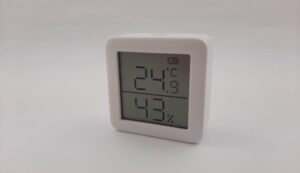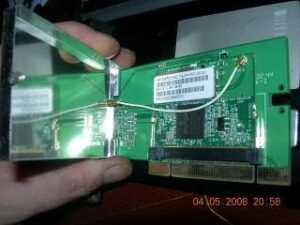Wireless keyboards have become increasingly popular for work, gaming, typing, and other tasks. This is simply due to the sheer comfort and convenience they offer in contrast to standard keyboards.
However, different wireless models serve different purposes. Some work great for gaming but not so much for work. Other models are a good fit for tablets, but you cannot use them for longer typing jobs.
This is why it is important to understand your options when you are considering buying a wireless keyboard.
In this guide, we have covered in detail the factors you must consider when choosing the best wireless keyboard for you. The guide also includes a quick look at some of the best models currently available on the market. Using this guide, you can find a wireless keyboard that best suits your requirements.
No products found.
Factors to Consider When Buying A Wireless Keyboard
Connectivity
Wireless keyboards typically come with two connectivity options: USB Dongle and Bluetooth. Some keyboards offer both options.
Bluetooth connectivity has its pros and cons. The stand-out advantage of a Bluetooth keyboard is that you can pair it with a wide range of devices. Most keyboards that support Bluetooth will easily pair with your laptop, tablet, smartphone, and smart TV.
The downside to this type of connection is that you may experience occasional lapses in pairing. It is not a frequent problem but can be very annoying when it occurs in the middle of a game or typing spree.
USB dongles are a more reliable way of connecting a wireless keyboard. If you go with this option, you will get a keyboard with a dongle. The dongle inserts into a USB-A port on the laptop or computer, and you are good to go.
This option may not be available to you if your PC or laptop doesn’t have an available USB-A port. Another downside to USB dongles is that they are easily lost. You are then left scrambling to find a replacement.
Battery Life and Charging
Wireless keyboards typically come with two types of power sources – alkaline batteries and rechargeable batteries.
The AA or AAA alkaline batteries last around a few months to a few years. You can easily get a replacement when they die. The downside is that these batteries can corrode and damage the keyboard, though this is rare.
Rechargeable keyboards ship with a charging cable. They offer more convenience as you can recharge them while using them. The more higher-end models with fancy features like backlighting usually have rechargeable batteries.
The disadvantage of the rechargeable models is that you have to ensure timely recharges. There is also no replacement if the rechargeable battery is damaged or becomes faulty for some reason.
Size and Portability
The size of a wireless keyboard determines its portability. After all, most users want to buy one simply because it’s more portable.
That being said, you must find a balance between portability and size. If the overall unit is small and portable, but the keys are too cramped, you will be unable to use it for a lot of typing. Smaller models are suitable if you want to pair the keyboard with your tablet or laptop for occasional support.
The larger models are more robust and offer a more comfortable typing experience. However, this comes at some cost to the portability of the unit.
Range
The range of wireless keyboards varies from model to model. Keyboards with USB dongles and RF connectivity typically offer a longer range than the Bluetooth models.
On average, the wireless variants come with an advertised range of 30 to 33 feet. The actual range may be less due to environmental factors such as furniture and walls.
You must consider your intended use when choosing a keyboard with the desired wireless range. For instance, if you want to pair your keyboard with a TV, you are likely to use it over some distance. Therefore, make sure the keyboard you choose supports this.
Layout and Design
Wireless keyboards vary widely in terms of the overall layout and design. There are the standard models, and then there are ergonomic units.
Standard models have the same design and layout as regular keyboards. Ergonomic units offer a more comfortable typing posture and help prevent hand injuries. However, these variants cost significantly more than the standard units.
If you use your keyboard extensively, with a keystroke-heavy routine, you may want to consider an ergonomic wireless keyboard. If you are an occasional user with no intensive typing tasks to do regularly, a standard unit should do.
Keystroke Mechanism
You can choose between two types of wireless keyboards when it comes to the keystroke mechanism. These include membrane keyboards and mechanical keyboards.
Membrane keyboards have the keys installed on a membrane layer. Once you press a key, the particular section of the membrane is depressed, and the keyboard recognizes the stroke.
These keyboards are incredibly quiet and perfect if you want a clack-free typing experience. Their disadvantage is that they deliver a poor tactile experience and may not support high-speed typing very well.
Mechanical keyboards have a separate switch for each key. Every stroke is clear, makes a bit of a clack, and registers instantly. These units are more responsive and let you achieve higher typing speeds without any lags or issues.
Pricing
Wireless keyboards start at as little as under $20 and go all the way up to several hundred dollars. The actual price tag depends on size and layout, connectivity options, extra features like backlighting, brand, and other factors.
The higher-end models cost more but deliver better features and are more long-lasting. Mid-range units also afford good quality and will last several years if maintained properly.
Your intended use will largely dictate what the right wireless keyboard is for you and how much it will cost. For instance, high-end gaming keyboards deliver robust functionality but can run into hundreds of dollars. On the other hand, simpler keyboards with standard features cost less.
Top 5 Best Wireless Keyboards
ASUS ROG Claymore II
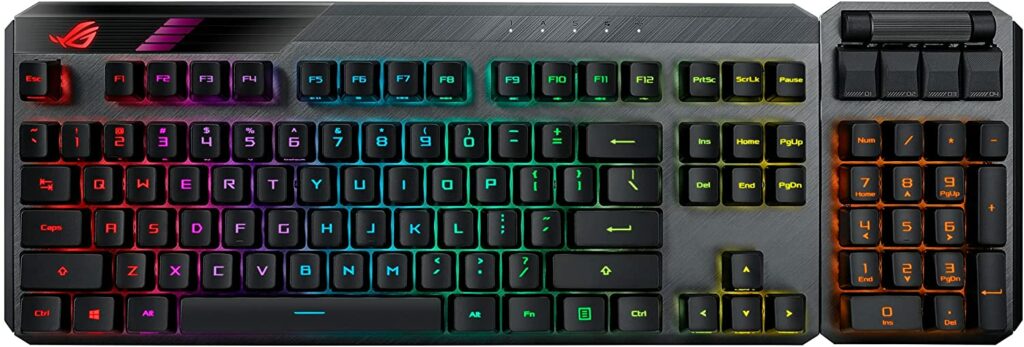
The ASUS ROG Claymore II is one of the higher-end gaming keyboards with wireless connectivity. It comes with a USB wireless connection as well as the option for wired functionality. USB-C charging allows you to juice up the keyboard quickly.
The design is mechanical with a detachable number pad that can be attached to either side of the keyboard. Claymore II comes with RGB backlighting and a wrist rest that is also detachable.
The downside to this model is that it comes with a steep price tag. The standard model costs above $250. CLICK HERE
1. Logitech G915 Lightspeed
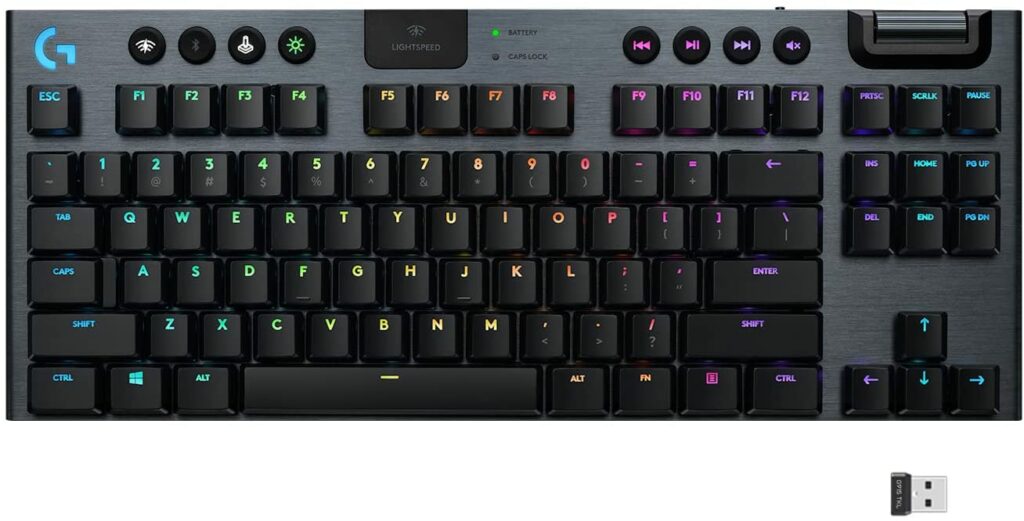
Logitech G915 comes with low-profile keys that provide a smooth and noiseless typing experience. The tactile experience is similar to a mechanical keyboard.
It comes with Bluetooth connectivity as well as a USB dongle. This allows you to connect to multiple devices via Bluetooth or enjoy a more lag-free experience by using the USB connection.
G915 gives you up to 30 hours on a single charge. The keys are lit with RGB illumination, and the battery timing may be reduced with RGB turned on. The unit also features dedicated G-keys for media, profile setup, and other functions.
A design issue with G915 is that it doesn’t offer built-in storage for the USB dongle. So you have either keep the dongle attached to the target device, such as your PC, or tuck it away somewhere safe.
The steep price point of the unit is also a downside, although it costs less than the Claymore II unit from ASUS. CLICK HERE
2. Razer Pro Type Ultra
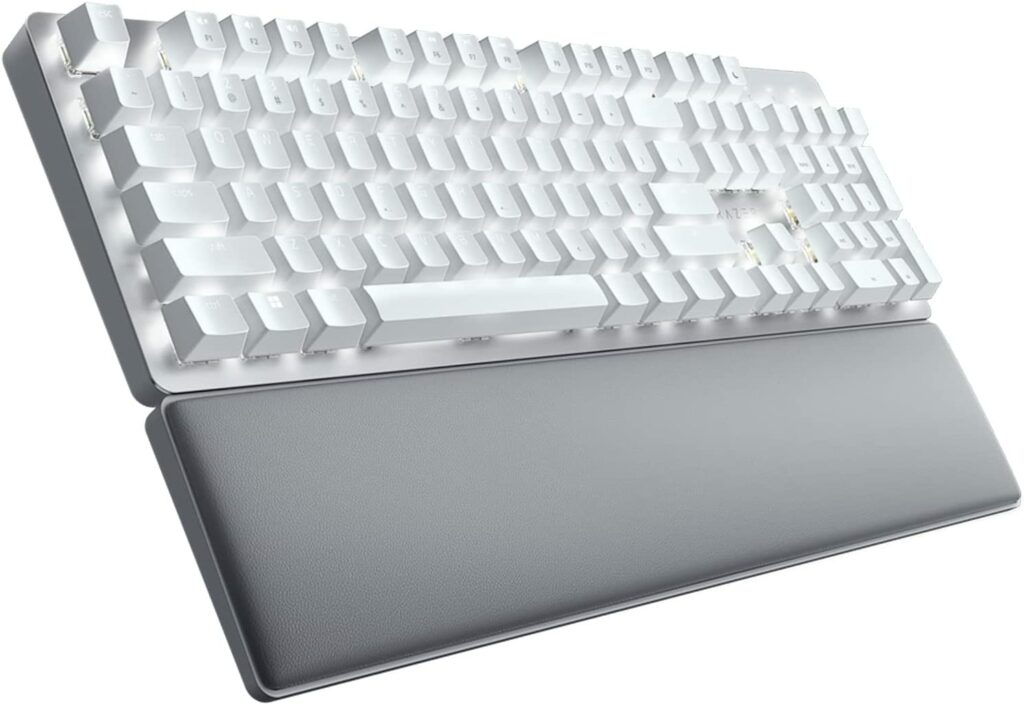
The Razer Pro Type Ultra is one of the most celebrated wireless mechanical keyboards out there. It combines high-speed typing with a quiet operation and good tactile feedback.
The keys on the white unit are very visible and easy to see, even in dark lighting conditions. Ultra can handle four devices at the same time and supports Bluetooth connectivity as well as 2.4 GHz wireless and wired USB-C connections.
A key feature of this wireless keyboard is the cushioned leatherette wrist rest that comes with it. The wrist rest makes it possible to use the unit ergonomically while typing away for extended periods. CLICK HERE
3. Razer Blackwidow V3 Pro
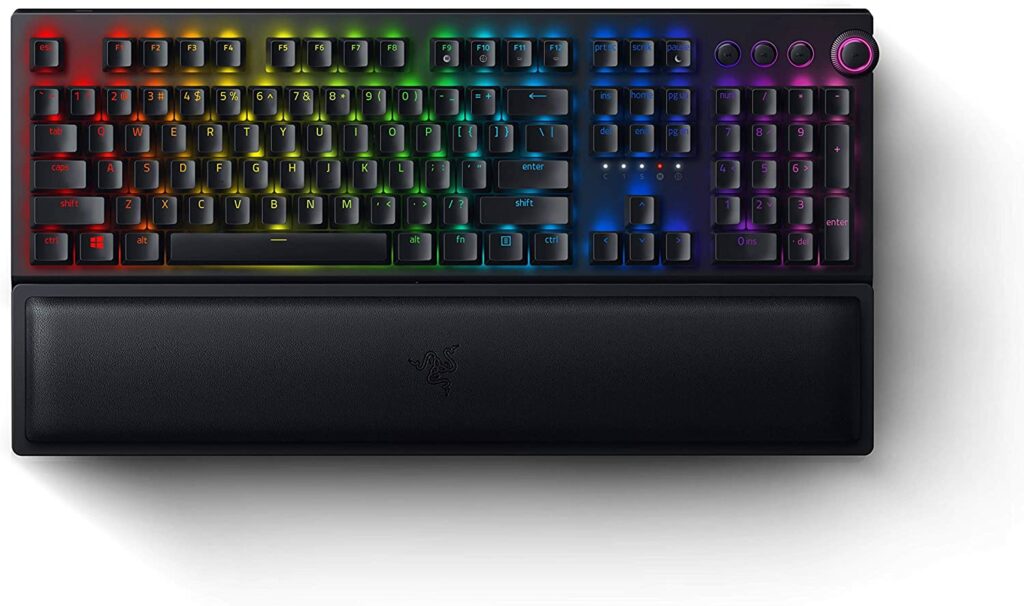
The Razer Blackwidow V3 Pro is primarily a gaming unit with all the features of a top-notch mechanical wireless keyboard. It has premium-feeling keycaps that deliver a great tactile experience while resisting smudging quite effectively.
This model can connect via Bluetooth, wireless dongle, or the wired cable that comes with it. V3 Pro can handle up to 4 devices at the same time. It is primarily geared at the gamers, with a battery time of up to 192 hours without lighting and up to 25 hours with backlighting.
A multi-function dial key sits at the top right corner of the keyboard. Other media keys are also a part of the interface. Also, it comes with a plus leatherette wrist rest. CLICK HERE
4. Redragon K596
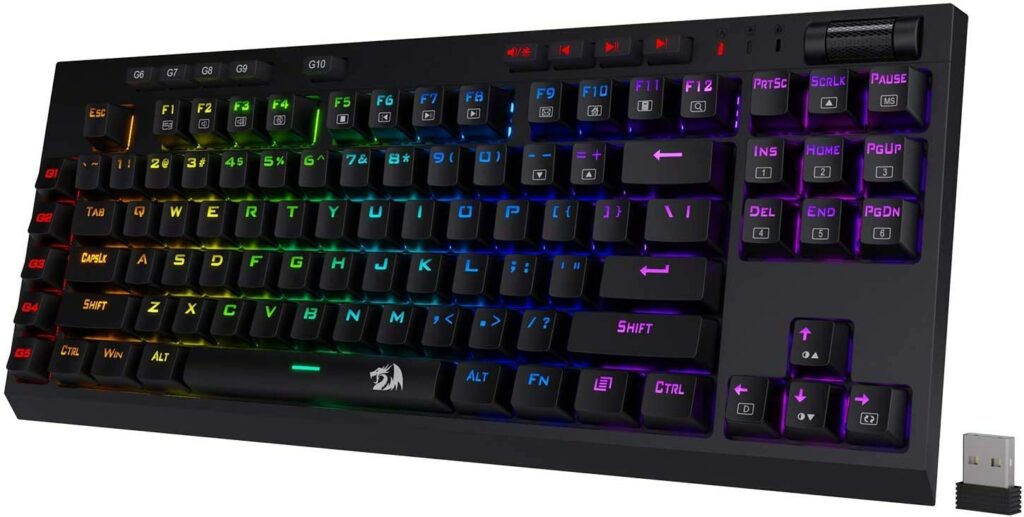
The Redragon K596 delivers many of the high-end features from better-known models at a much less cost. At around $70, this is one of the most affordable wireless gaming keyboards on this list.
The K596 is a mechanical unit with a hard-plastic wrist rest appended to the bottom of the keyboard. It has a dedicated set of media keys at the top, including a volume wheel. However, the unit is heavier than most other wireless keyboards, and the design lacks a premium feel. CLICK HERE
5. iQuinix A80 Explorer
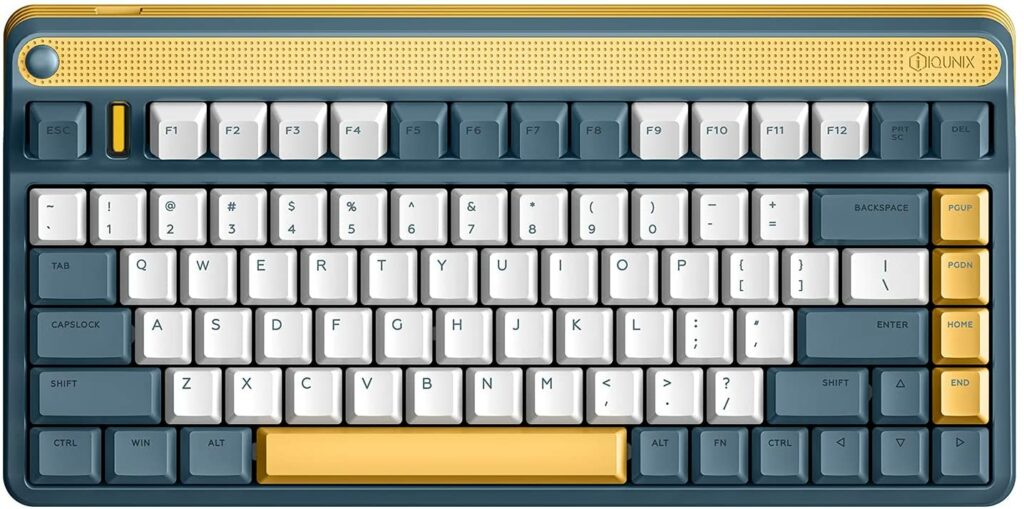
The iQuinix is a stand-out wireless keyboard that has a retro-inspired design. The outlook features a tasteful blend of white, yellow, and blue colors. This mechanical unit delivers a fairly noiseless typing experience and is suited for both work and gaming.
The A80 Explorer offers connectivity through both Bluetooth and a wireless dongle. However, it is an 80% keyboard, so it lacks both the numeric pad and the special media keys that routinely adorn wireless keyboards. Another downside is the relatively steep price. CLICK HERE
Conclusion
Buying a wireless keyboard is a significant investment. The higher-end models can cost hundreds of dollars, so it is important to make the right decision when purchasing one. A keyboard that fits your needs well will also help you improve productivity and performance.
Some key factors you must consider when buying the best wireless keyboard for you include:
Connectivity – Do you want Bluetooth connectivity, USB dongle wireless connection, or both?
Battery Life and Charging – Do you want an AA or AAA alkaline battery powered-model or one that has a rechargeable battery? The lifetime and replacement options vary in each case.
Size and Portability – Do you need a unit that fits your pocket or tablet pouch easily or one that is large enough to afford comfortable typing for longer posts? The size determines portability.
Range – What should be the wireless range of your keyboard? Most Bluetooth and USB dongle models come with a range of 30 to 33 meters.
Layout and Design – Do you want a standard-layout keyboard, one with an ergonomic design, with or without a numeric pad? These choices matter.
Keystroke Mechanism – How do mechanical keyboards differ from membrane keyboards? It is important to distinguish and choose between the two.
Pricing – The pricing of wireless keyboards varies wildly. Look for models that offer the functionality you require without breaking your budget.
You can also explore the top 5 models we have included in this guide. A huge range of other wireless models are available on the market, and you can explore them on your own. With the pointers in this guide, you are sure to make an informed decision.

